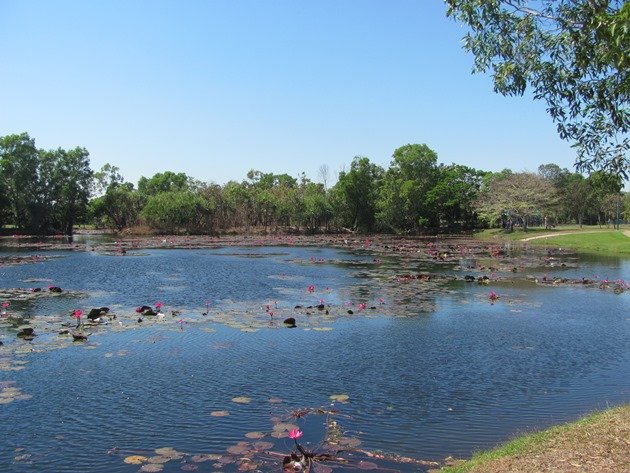
When we first arrived in Palmerston I downloaded the bike map and then looked for water bodies within the city. There have been some new developments since we lived here in the late 1990’s and the new housing area in the suburb of Gunn has a lake system called Sanctuary Lakes. It is a downhill bike ride over the escarpment from the city centre to the lake system, but I do travel slowly because there are often surprises at the drains. Chestnut-breasted Mannikins, Double-barred Finches, Crimson Finches and Long-tailed Finches are often present in these areas and Bar-shouldered Doves and Peaceful Doves are also common. The tall trees offer Blue-faced Honeyeaters and Yellow-throated Miners and I often encounter Red-tailed Black Cockatoos at this time of year.
There is a path around Sanctuary Lakes and a car-park, but it can easily be reached from all the surrounding area along footpaths. It offers shade, seating, barbecues, a playground and toilet facilities. It is a popular place in the evenings and weekends, but when I visit during the day I am often the only person there. The water lilies are impressive, but they do need trimming back each season to prevent them from choking the system. A recent trim by the council left the lake looking rather empty of foliage, but it did not take long and the water lily flowers reappeared on the surface.
The trees around the lake are used as a roost by Little Corella and they sit quietly throughout the day. There are also Sulphur-crested Cockatoos and Red-collared Lorikeets and Pied Imperial Pigeons roosting in the trees if you look carefully. Figbirds and Olive-backed Orioles blend in well despite their bright colours, with their vocalisation giving them away.
Little Corella roosting
It is a good place for the honeyeater species and as each native tree flowers you see the arrival of different species. On my visits over the past few weeks I have seen Rufous-banded Honeyeaters, Blue-faced Honeyeaters, Dusky Honeyeaters, White-throated Honeyeaters and Bar-breasted Honeyeaters. The Bar-breasted Honeyeater got my attention by swooping down from a tree & dipping itself in the water. It was performing exactly like a Rufous-throated Honeyeater would at home in Broome. It perfected its dipping while I struggled to perfect a photo of it!
Bar-breasted Honeyeater
The easier birds to observe are the birds around the lawns and on the water, which of course delight the children that visit. The Masked Lapwings are by far the noisiest bird at Sanctuary Lakes and almost guard the perimeter. There have been Straw-necked Ibis and White Ibis present most days, but sometimes they are joined by a Royal Spoonbill.
Straw-necked Ibis
White Ibis, Straw-necked Ibis and Royal Spoonbill
Royal Spoonbill, Little Black Cormorant and Radjah Shelducks
Royal Spoonbill feeding
The most common duck species at Sanctuary Lakes is the Radjah Shelduck and they have bred there this year. There are also Pacific Black Ducks and some domestic ducks. There have been three Hardhead present over the past few weeks, which is the highest number we have seen in the Darwin area. Green Pygmy-geese are often among the water lilies. A Common Greenshank even dropped by recently!
Radjah Shelduck
Hardhead
Hardheads and Little Black Cormorants
Hardheads
An Australian Darter usually roosts on one of the islands or along the grassy edges and there are fish in the lake. I have also observed large water monitors, which are large lizards, enter the lake from the path and rapidly submerge and cross to the island.
Australian Darter
The cormorant family are represented by the Little Black Cormorant and the Little Pied Cormorant. It is rather amusing when the Little Pied Cormorant chooses to ignore the “no swimming” sign, take a swim and then promptly use the sign for roosting!
Little Black Cormorants
Little Pied Cormorant
Great Egrets, Intermediate Egrets and Little Egrets can be observed at Sanctuary Lakes. They may be among the water lilies or along the banks, but do offer some nice photo opportunities.
Intermediate Egret
Little Egret
With upward observations there are Black Kites and Whistling Kites and there is the occasional visit by a Brown Goshawk. Pied Butcherbirds, Rainbow Bee-eaters, Dollarbirds, Sacred Kingfishers and Forest Kingfishers are in the area and the hilarious Grey-crowned Babblers amuse the children. Over a few visits I have observed 50 species and no doubt more could be observed throughout different times of the year. I usually then continue on around the bike path to visit Marlow Lagoon.


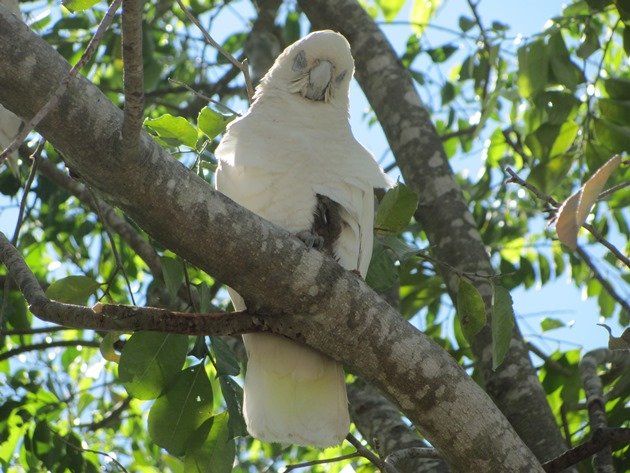
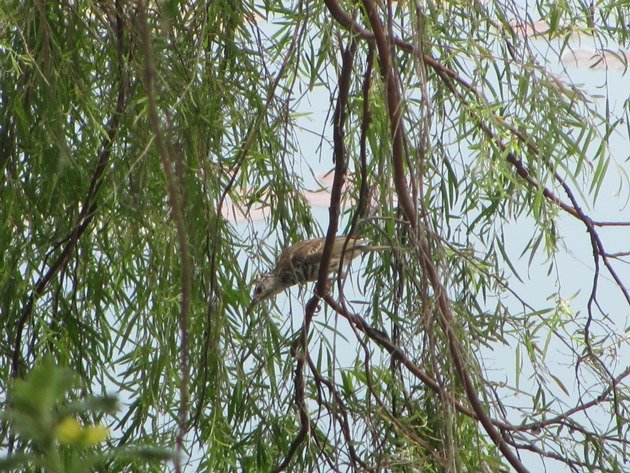
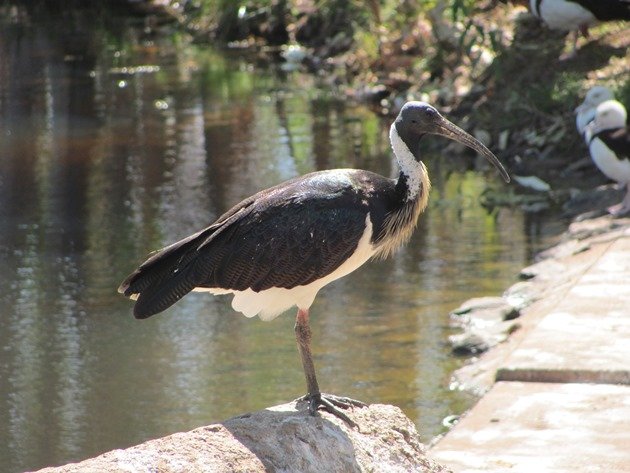
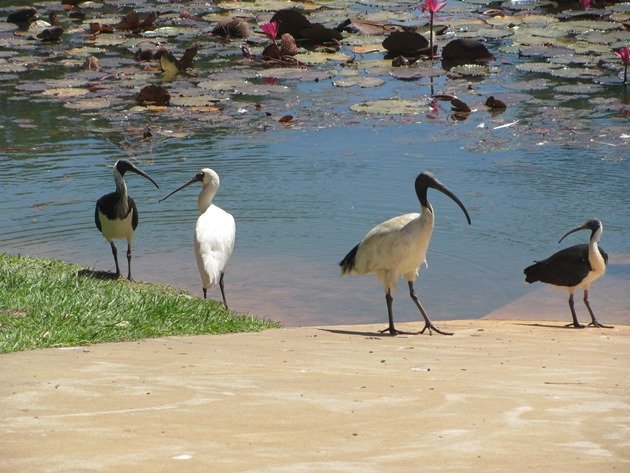
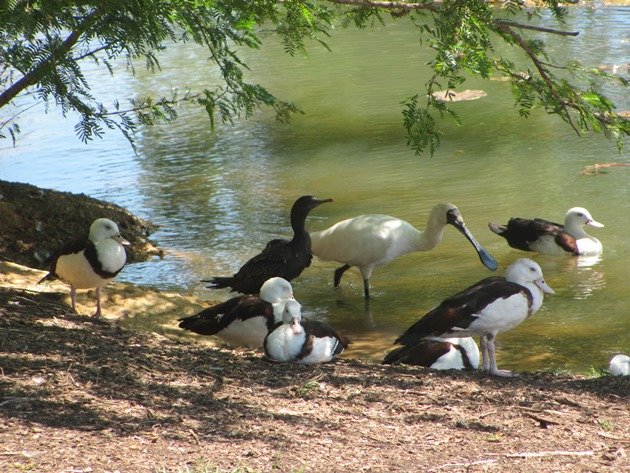
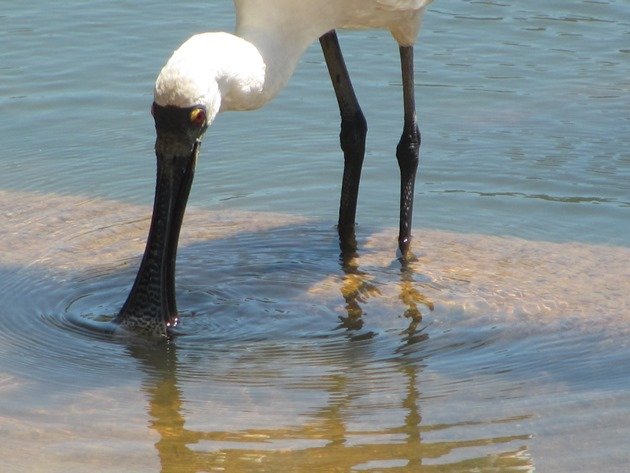
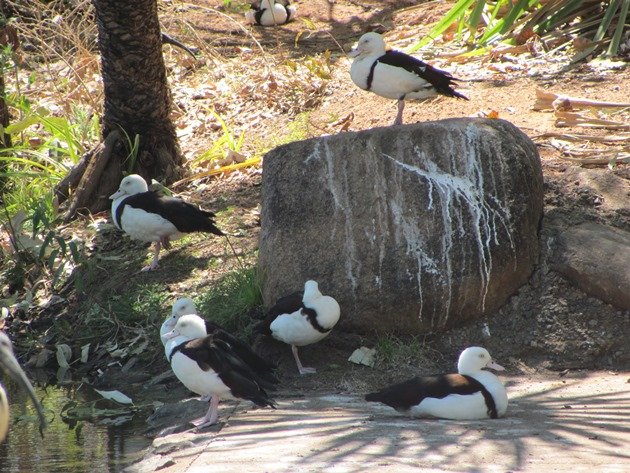
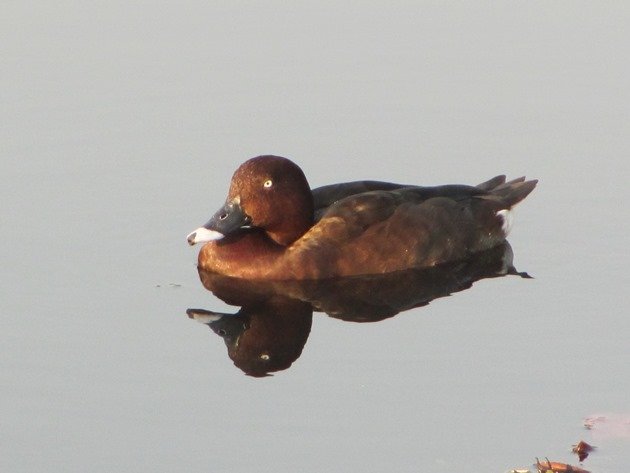
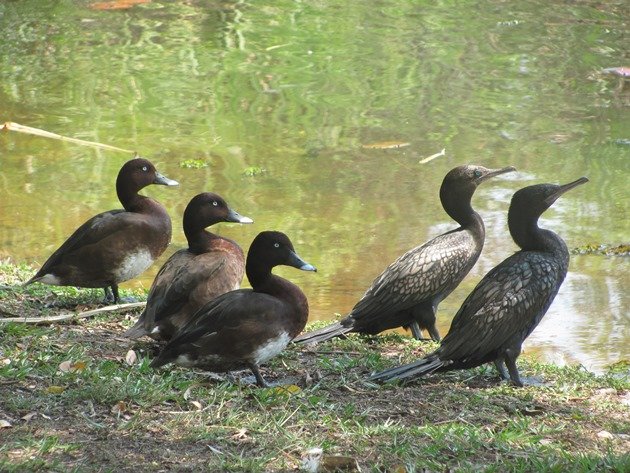
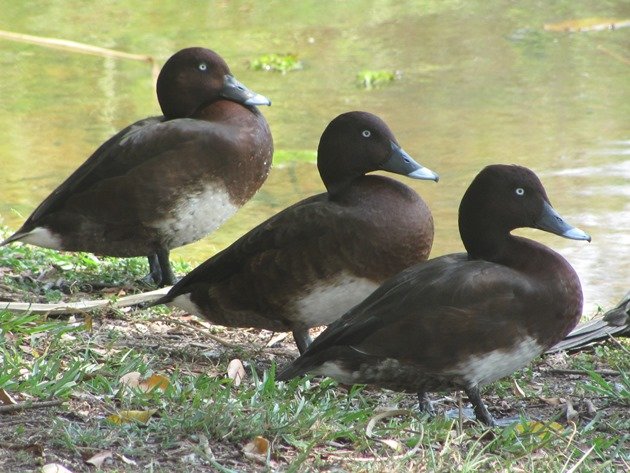
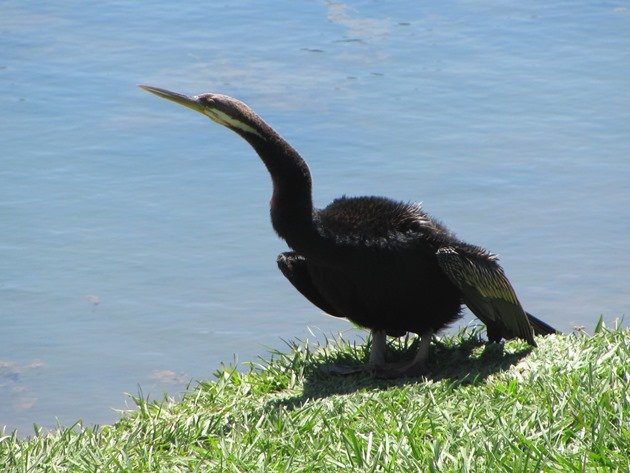
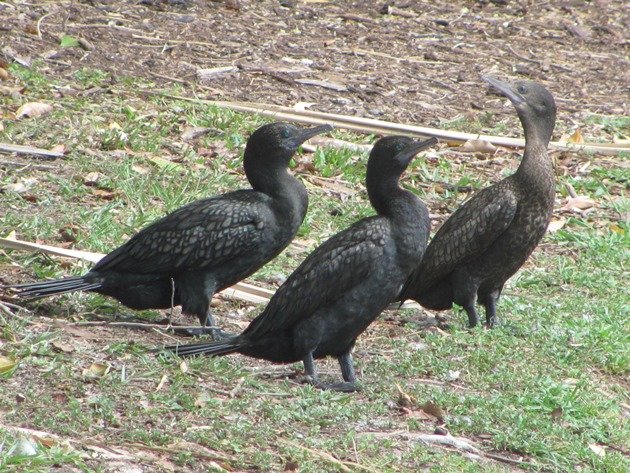
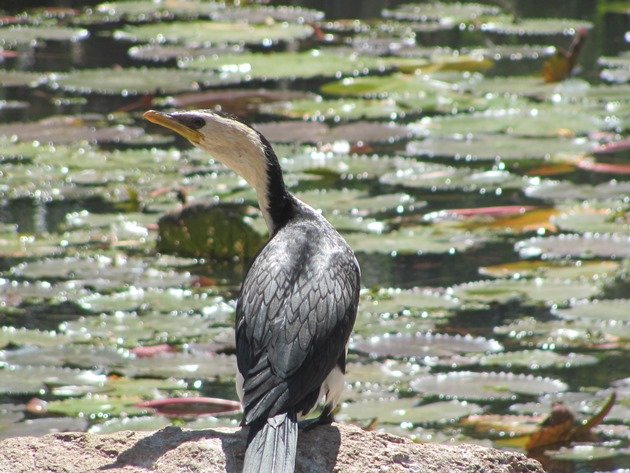
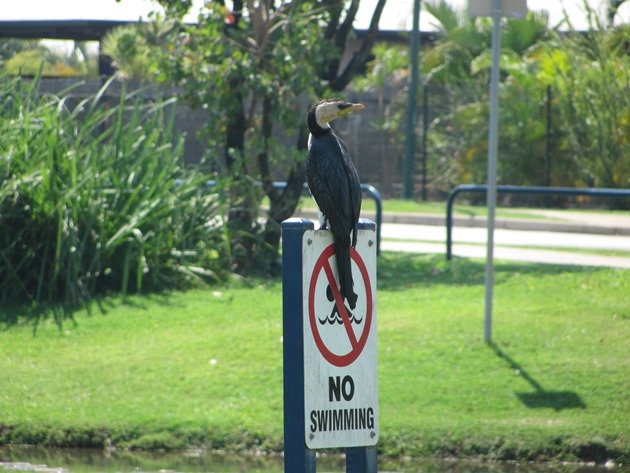
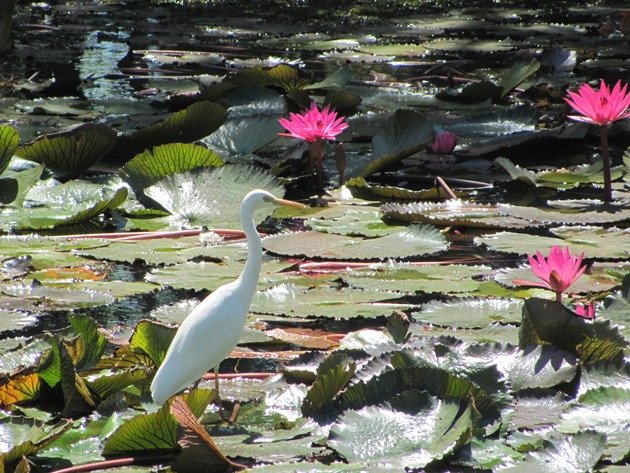
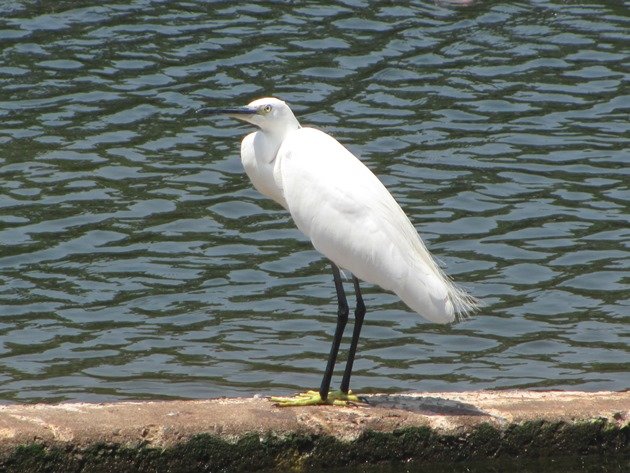











What amazing diversity of species! I love the photo of the Royal Spoonbill feeding!
Thanks! It is great to see so much diversity in a city! 🙂